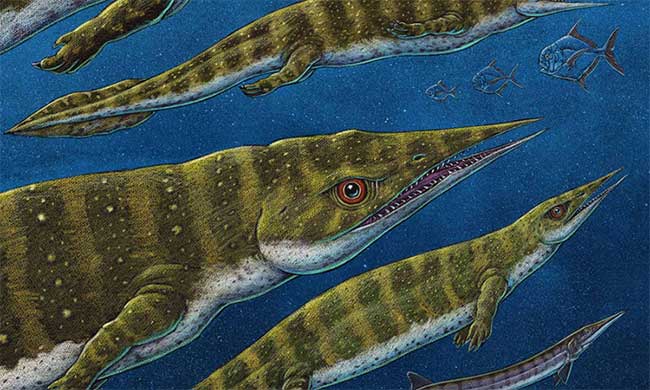200 million-year-old sea lizard fossils discovered
The geologist found the most complete fossil of a pointed snout sea lizard Gunakadeit joseeae in North America.

G. joseeae fossils were discovered on Keku Islands, Alaska.(Photo: IFL Science).
Each year, the Tongass National Forest in southeastern Alaska experiences one or two major tidal fluctuations, exposing submerged reef areas. In such an event, geologist Jim Baichtal from the US Forest Service accidentally discovered the 200 million-year-old fossil skeleton of an entirely new species of sea lizard (thalattosaur) , named Gunakadeit joseeae. .
The specimen found on the Keku Islands, near Kake village, is the most complete fossil of a pointed muzzle thalattosaur in North America. The discovery, first published in Scientific Reports, changed the scientific community's understanding of ancient marine reptiles.
"Thalattosaur is one of the first land-based reptile groups to adapt to life in the ocean," Neil Kelley, co-author of research at Vanderbilt University, said in a statement. "They thrive for tens of millions of years but fossils are relatively rare, so new specimens have helped fill the gaps in their evolution and extinction."

Image of reconstruction of G. joseeae.(Graphic: Ray Trool).
Before G. joseeae was discovered, the relationship of the thalattosaur group in a phylogenetic tree was not updated for two decades. These ancient lizards lived mainly in equatorial oceans during the Three Gorges, around the same time as their distant dinosaur relatives. Despite its wide range of habitats, the scarcity of complete fossils has hindered efforts to fully understand their evolutionary history during periods of dramatic sea ecosystem change.
G. joseeae is a relatively small reptile compared to its contemporaries, when it was only about 4 m long. They have 4 legs, short snout, pointed and highly adaptable, allowing survival in shallow coastal waters.
According to the team, G. joseeae represents a new taxon, widening the morphological differences in lizard groups and changing scientists' understanding of how ancient reptiles eat, distribute and their ultimate extinction.
- The Mosasaur sea lizard once dominated the ocean
- Discovered sea lizard fossils 75 million years
- Mexico: Lizard discovered 23 million years old
- Dog sniffs see ancient fish lizard fossils
- Discover the oldest lizard lord
- Detecting sea lizard fossils 75 million years
- 309 million fossils of mother and son of lizard
- Flying lizard eggs 120 million years in China
- Detection of giant dinosaur fossils in Argentina
- Discovered dinosaurs never known in Argentina
- Found fossil lizard 120 million years old
- Detection of 67 million-year-old dinosaur fossils
- Discovered an ancient snake-headed lizard
- Detection of 180 million year old sea monster fossils
 Discovered an ancient centipede fossil 99 million years old
Discovered an ancient centipede fossil 99 million years old Discovered bat-like dinosaurs in China
Discovered bat-like dinosaurs in China Discovered a 200-year-old bronze cannon of the coast
Discovered a 200-year-old bronze cannon of the coast Discover 305 million-year-old spider fossils
Discover 305 million-year-old spider fossils